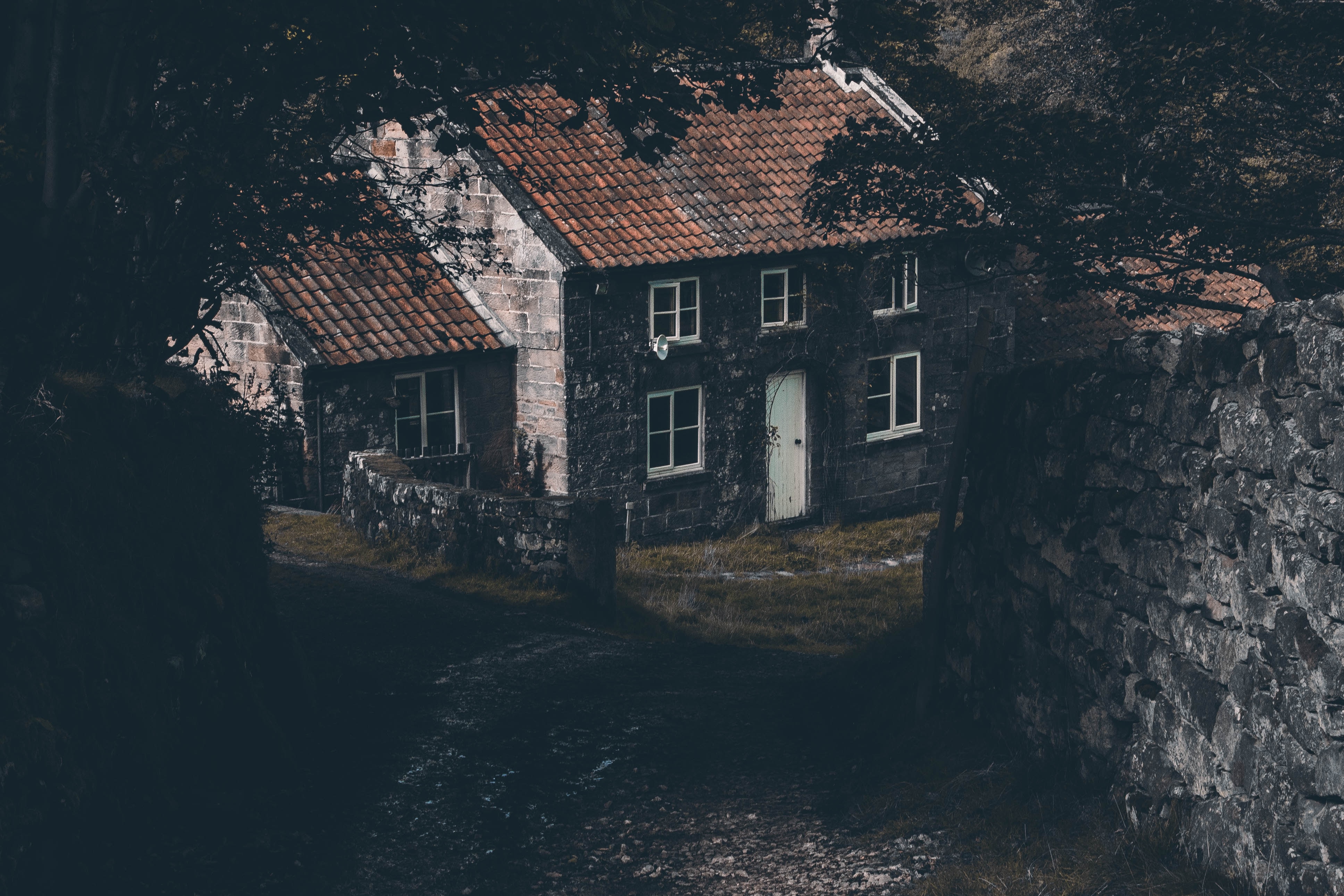The little phantom had arisen, its slim finger was outstretched, — it beckoned, slowly beckoned, as, growing indistinct, it receded farther and farther out…
From “The Ghost of Little Jacques,” attributed to Anna M. Hoyt in The Atlantic Monthly in 1863.
Sketches of a Spirit: Hoyt’s (Lack of) Biography

Outside of a handful of publications attributed to her, researchers do not know much about Ann Hoyt. Scholars are even puzzled over her true name: in some of her publications, she is listed as Ann E. Hoyt; in others, she is Ann M. Hoyt. What is even more confusing is that her first name has also been published as “Anna,” and, in a misprint found in Ghost Stories by British and American Women: A Selected, Annotated Bibliography by Lynette Carpenter and Wendy Kolmar, she is even mistakenly identified as Amanda.
It would seem that, in her pursuit of telling ghost stories, Hoyt somehow managed to become a ghost herself.
Despite this lack of biography, the work attributed to Hoyt is nothing short of amazing. Two of her short stories, “The Ghost of Little Jacques,” and “Was it Insanity?” act as evidence of a woman who was socially conscious and utilized the often underappreciated tradition of the Female American Gothic to critique the world in which she lived.
The Female American Gothic: A Forgotten Tradition
The genre in which Hoyt wrote, the Female American Gothic, is often excluded from critical conversation. Originally conceived by Ellen Moers, the idea of the female Gothic refers to the ways that “[Gothic] texts [function] as coded expression of women’s fears of entrapment within the domestic and within the female body, most terrifyingly experienced in childbirth” (Smith and Wallace 1). Smith and Wallace go on to state that the “Female Gothic articulated women’s dissatisfactions with patriarchal society and addressed the problematic position of the maternal [and feminine] within that society” (Smith and Wallace 1). Knowing this, it comes as no surprise that “70 percent of [nineteenth- and twentieth-century supernatural fiction written in English] was composed by [both British and American] women” (Weinstock 15). The female American Gothic therefore takes the fundamental concept of the female Gothic and addresses specifically American anxieties such as life after death post-Civil War, the rights of women as affected by the American Suffragette Movement, and classism stemming from America’s capitalist economic system. These issues are particularly prevalent in Hoyt’s work.
Gender, Class, and “The Ghost of Little Jacques”
“The Ghost of Little Jacques” is narrated by Christine, a lower-class housekeeper for the family of Madame and Monsieur C—. They are the parents of Jacques, a precocious child who passes away prior to the beginning of the story (Hoyt, “The Ghost…” 213-215). Within the first few pages, Christine encounters Jacques’ ghost, which leads her to find the poisoned chocolates that killed the young boy (Hoyt, “The Ghost…” 215). Christine, suspecting Madame C— of murdering the poor child, leaves her job; years later, she reunites with Monsieur C—, who claims that the Madame died. Christine and Monsieur C— marry and all is well until Christine discovers that Madame C— is not dead and that her husband killed not only little Jacques but two of his other children as well (Hoyt, “The Ghost…” 220-221). However, by the story’s end, Monsieur C—, guilty after the ghost of his son accosts him, perishes (Hoyt, “The Ghost…” 226). Christine is therefore freed from a marriage burdened by fear, threats, and abuse.
“The Ghost of Little Jacques” is particularly interesting when we consider the historical context behind it. Christine, our narrator, faces both gendered and class-based oppression, two things that nineteenth-century society was attempting to reckon with (Luca, 1-7). Nineteenth-century periodicals were filled with debates and scathing articles both decrying and supporting the liberation of women and lower-class individuals.
“Was it Insanity?” and the quest to overcome death
“Was it Insanity?” is narrated by Sophia and tells the tale of Madame Rosine, her teacher, who is obsessed with overcoming the pains associated with death. Sophia lives with her sister, Fanchette, Madame Rosine, and Madame Rosine’s grandmother in a small cottage by the beach, a result of their father’s hectic work schedule (Hoyt, “Was it Insanity?” 525). As the grandmother’s mental and physical health deteriorates, tensions between her and Madame Rosine escalate, although these arguments are dismissed by Sophia, whose judgment is clouded due to her love for and devotion to Madame Rosine (Hoyt, “Was it Insanity?” 527). The story comes to a head when Fanchette consumes a poisoned pastry meant for the grandmother and dies, a result of Madame Roseine’s desire to make death “easy,” a desire borne both from compassion and frustration (Hoyt, “Was it Insanity?” 529). Fanchette’s death drives Madame Rosine insane.

“Was it Insanity?” attempts to reckon with America’s desperation to overcome and understand death in the wake of the Civil War. Madame Rosine’s obsession with making death “easy” is ultimately a fruitless pursuit, but her desperation is one that was felt across the nation. People became enamored with the idea that life did not simply end when the physical body perished, convinced that there had to be something beyond the world we know (Luca, 8-10).
Talking to ghosts: what we can learn
Hoyt’s work is worthy of discussion. Her work belongs to the Female American Gothic, a tradition that is often missed in critical conversation; these works can offer important glimpses into the thoughts of women living in nineteenth-century America. Furthermore, Hoyt’s work is shockingly modern, disabusing present-day readers of the notion that the past is some far-away concept. Misogyny, classism, and society’s fear of death are all topics that still, like Hoyt, haunt us today. The ghosts of the past will not be silenced; it is time we listen to them.
Works Cited
Carpenter, Lynette, and Wendy Kolmar. Ghost Stories by British and American Women: A Selected, Annotated Bibliography. Abington, United Kingdom: Routledge, 1998.
Hoyt, Ann M. “The Ghost of Little Jaques.” The Atlantic Monthly: A Magazine of Literature, Art, and Politics, Feb. 1863, pp. 213-226.
Hoyt, Ann M. “Was it Insanity?” Beadles Monthly: Magazine of Today, vol. 3, no. 6, 1867, pp. 524-529.
Luca, Marissa. “The History Behind the Haunting: Societal Trauma and Anxiety in the Work of Ann Hoyt.” 1 Nov. 2019. Senior Seminar in Literary Recovery, Stockton University, student paper.
Smith, Andrew, and Diana Wallace. “The Female Gothic: Then and Now.” Gothic Studies, vol. 6, no. 1, May 2004, pp. 1–7. EBSCOhost, search.ebscohost.com/login.aspx?direct=true&db=lfh&AN=14860833&site=ehost-live.
Weinstock, Jeffrey Andrew. Scare Tactics: Supernatural Fiction by American Women. 2nd ed., Fordham University Press, 2016.